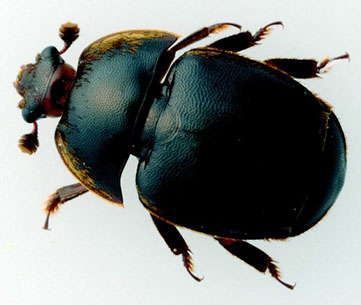Small Hive Beetle – Biosecurity Tasmania
21 March 2023Moratorium on Opening Hives On 12 March 2023, Biosecurity Tasmania placed a moratorium on the opening of hives, harvest of honey and honeycomb, and movement of beekeeping equipment for any […]

Moratorium on Opening Hives
Current response information
Biosecurity Tasmania is currently investigating a confirmed detection of a single small hive beetle (SHB) in a guard hive located in the Devonport area.
This detection does not mean that SHB is established in Tasmania. At this point there has been no further detections beyond the single guard hive.
SHB, which originates from Africa, has been detected in all Australian states except the Northern Territory. In its larvae stage, SHB burrows into beehives consuming brood, pollen and honey, which can significantly damage the hive population and honey production.
Tasmania’s Chief Plant Protection Officer, Andrew Bishop, has declared a General Biosecurity Direction, which establishes a 15 km Bee Movement Restriction Area around the detection site, and restricts the movement of bees and bee products within, into and out of the zone.
Use this interactive map to find out if your apiary or any other property where hives are kept is within the Restricted Area: Bee Movement Restriction Area interactive map
Biosecurity Tasmania has enacted emergency management protocols including extensive hive and site inspection within the Restricted Area. This approach is designed to protect the health of Tasmania’s bee population and our honey and pollination sectors.
These restrictions do not affect honey movement and sale within the Restriction Area, provided it was harvested prior to 8 March and has been filtered to a maximum 2mm pore size.
Hives and bee equipment originating outside of the Restriction Area may be able to transit through the Area (eg from Smithton to Launceston) under a group permit.
Small hive beetle
The small hive beetle, Aethina tumida (Murray), was discovered in hives at Richmond, New South Wales in late October 2002. It has subsequently been found in all Australian States except Western Australia. It has now been found in Tasmania. Prior to this date the Small Hive Beetle was not known to exist in Australia.
Biosecurity Tasmania contact information
Biosecurity Tasmania: (03) 6165 3777
If you are inside the Bee Movement Restriction Area and have moved your hives or removed any elements of a hive since 8 March 2023 or in the four weeks prior, please notify Biosecurity Tasmania and provide updated location details.
If you believe you must open a hive for any reason, please contact Biosecurity Tasmania on 6165 3777

